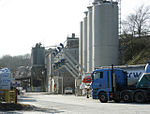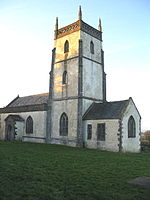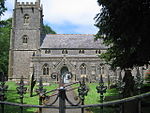Emborough Quarries (grid reference ST623505) is a 1 hectare (2.5 acre) geological Site of Special Scientific Interest at Emborough in the Mendip Hills, Somerset, notified in 1971.
The disused quarry has yielded a wide variety of remains of vertebrate fossils, amongst which the early reptiles are particularly well represented. Of special note is Kuehneosaurus latus which is one of the earliest-known flying vertebrates. During the Triassic period of geological time, some 230 million years ago, the limestones now exposed on Mendip formed upland areas upon which a number of large rivers rose. Solution cavities were soon created in the land surface and material from the surrounding area was swept into the newly formed cave systems. Remains of the creatures living in the upland areas during this time were swept into these deposits and have now been exhumed by recent quarrying activities. Fresh material is brought to the surface with every rock fall and Emborough Quarries are a nationally important source of fossil vertebrate remains for research and study.This former Mendip quarry site, probably owned by Emborough Stone Co., a branch of Roads Reconstruction, Ltd., where iron ore was once mined is now home to an assembly of contractor's plant (possibly of Richard Wood (Engineering) Ltd), cranes and machine tools. It is the location of Nettlebridge Viaduct, a seven-arch bridge that once carried the Somerset and Dorset Railway.The site was owned by Emborough Stone Co which was later bought by Roads Reconstruction Ltd. The rock quarried was carboniferous mountain limestone which was used for construction and railway ballast. There are 2 main quarries and several trial quarries. The site was previously used by the Emborough Brick Co for making clay bricks.








